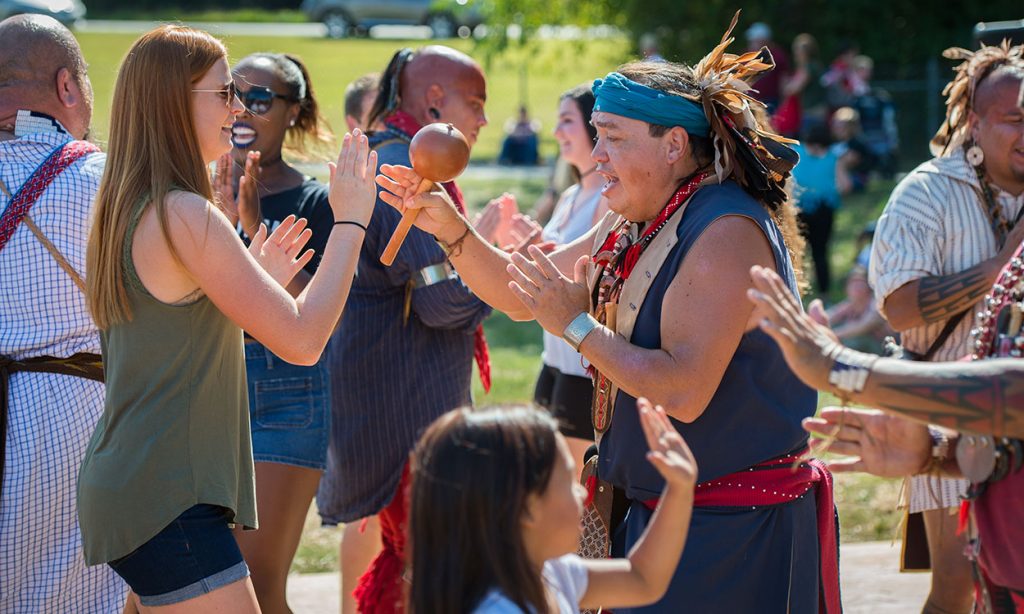STUDENTS, ALUMNI COLLABORATE ON YELLOWSTONE PROJECT
A group of four Western Carolina University geology students and alumni kept an eye out for grizzly bears and other wildlife last spring while working on a project to map landslides in one of the crown jewels of the U.S. park system – Yellowstone. Pictured above, (from left, with U.S. government engineering geologist Doug Anderson in the background) Richard Pedigo, Courtney Hartman, Holly Hurding-Jones ’18 and Eliza Hurst ’18 participated in field training with a Yellowstone geologist and a National Park Service geomorphologist to learn the details of a landslide and slope assessment methodology. Their field work involved spending 40 hours per week mapping landslides along several major Yellowstone highway corridors, including West Entrance to Madison Junction, Madison Junction to Old Faithful, and Madison Junction to Mammoth Hot Springs.
The landslide assessment included analyzing areas along the park’s roads that have the potential to cause a landslide or rock fall in the future, and also areas where landslides and rock fall have occurred in the past, Hurding-Jones said. The WCU students and alumni rated hazard areas based on factors such as the angle of the slope, the rock type and “the catchment of the slope for debris to be caught and not affect the road,” she said. The WCU group’s work is part of an ongoing relationship between the university’s Program for the Study of Developed Shorelines and the National Park Service. Over the years, the PSDS staff has examined the natural hazard vulnerability of Park Service infrastructure at numerous national parks along U.S. coastlines, but this is the first time program representatives have conducted such a study at an inland park, said Blair Tormey, coastal research scientist with the PSDS.
The overall vulnerability assessment at Yellowstone, which also includes an examination of hazards such as inland flooding, river channel migration, wildfires, earthquakes and geothermal activity, is being conducted by Tormey and two other PSDS colleagues – Rob Young, program director, and Katie McDowell Peek ’07, coastal research scientist. The student/alumni group’s findings will be incorporated directly into the final assessment report and will direct the use of unstable slope management techniques in the park.
